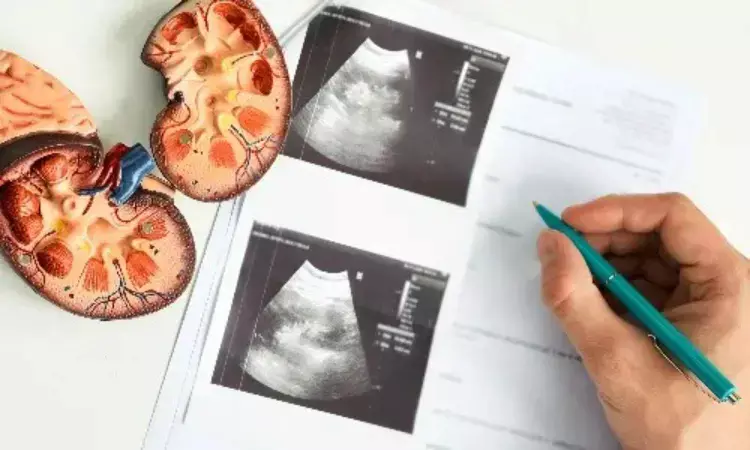- Home
- Medical news & Guidelines
- Anesthesiology
- Cardiology and CTVS
- Critical Care
- Dentistry
- Dermatology
- Diabetes and Endocrinology
- ENT
- Gastroenterology
- Medicine
- Nephrology
- Neurology
- Obstretics-Gynaecology
- Oncology
- Ophthalmology
- Orthopaedics
- Pediatrics-Neonatology
- Psychiatry
- Pulmonology
- Radiology
- Surgery
- Urology
- Laboratory Medicine
- Diet
- Nursing
- Paramedical
- Physiotherapy
- Health news
- Fact Check
- Bone Health Fact Check
- Brain Health Fact Check
- Cancer Related Fact Check
- Child Care Fact Check
- Dental and oral health fact check
- Diabetes and metabolic health fact check
- Diet and Nutrition Fact Check
- Eye and ENT Care Fact Check
- Fitness fact check
- Gut health fact check
- Heart health fact check
- Kidney health fact check
- Medical education fact check
- Men's health fact check
- Respiratory fact check
- Skin and hair care fact check
- Vaccine and Immunization fact check
- Women's health fact check
- AYUSH
- State News
- Andaman and Nicobar Islands
- Andhra Pradesh
- Arunachal Pradesh
- Assam
- Bihar
- Chandigarh
- Chattisgarh
- Dadra and Nagar Haveli
- Daman and Diu
- Delhi
- Goa
- Gujarat
- Haryana
- Himachal Pradesh
- Jammu & Kashmir
- Jharkhand
- Karnataka
- Kerala
- Ladakh
- Lakshadweep
- Madhya Pradesh
- Maharashtra
- Manipur
- Meghalaya
- Mizoram
- Nagaland
- Odisha
- Puducherry
- Punjab
- Rajasthan
- Sikkim
- Tamil Nadu
- Telangana
- Tripura
- Uttar Pradesh
- Uttrakhand
- West Bengal
- Medical Education
- Industry
Rare case of Granulomatosis with Polyangiitis Presenting as Solitary Renal Mass: A Report

In an unusual case published in BMC Nephrology, a 75-year-old woman was diagnosed with Granulomatosis with Polyangiitis (GPA) after presenting with a solitary renal mass. GPA is a rare autoimmune disorder characterized by necrotizing granulomatous vasculitis, primarily affecting small-sized vessels in the upper and lower airways and kidneys. Renal involvement in GPA typically manifests as focal segmental necrotizing glomerulonephritis, leading to rapid renal failure. However, the presence of a renal mass in GPA patients is exceptionally rare but can be identifiable.
The patient's condition came to light when an enhanced computed tomography (CT) scan revealed a solitary mass measuring 4 × 3.5 cm in her right kidney. Initially, there were no apparent symptoms or history of sinusitis, rhinitis, cough, or pneumonia, which are suggestive of systemic GPA. To rule out malignancy like renal cell carcinoma or malignant lymphoma, the patient underwent a nephrectomy.
Three months after the surgery, she was admitted again as her serum creatinine levels had risen dramatically from 54.81 μmol/L to 405.76 μmol/L, and her C-reactive protein level was measured at 159 mg/L. However, tests for anti-neutrophil cytoplasmic antibodies against myeloperoxidase and anti-proteinase 3 came back negative. Subsequent histological examinations of the excised renal mass revealed necrotizing granulomatous arteritis in the cortex and medullary vasa recta, along with focal segmental necrotizing glomerulonephritis. Interestingly, there were no signs of vasculitis observed in any areas other than the solitary mass. Based on these findings, the patient was diagnosed with GPA.
Prompt treatment with prednisolone (30 mg/day) was initiated, but unfortunately, her renal function continued to deteriorate. Within one month of starting steroid therapy, the patient developed oliguria, and her serum creatinine levels soared to 583.44 μmol/L, necessitating hemodialysis. Nevertheless, the patient's response to treatment was favorable, and she could eventually discontinue hemodialysis after 21 months, as her serum creatinine level decreased to 251.06 μmol/L.
This case highlights the importance of considering GPA as a potential differential diagnosis when encountering a solitary renal mass, even though it is exceedingly rare. Early identification and appropriate management are crucial in mitigating the impact of this potentially life-threatening condition.
Source:
Higashihara, M., Kawamura, T., Miyazaki, Y., Yokoo, T., & Joh, K. (2023). Granulomatosis with polyangiitis presenting as a solitary renal mass: a case report. In BMC Nephrology (Vol. 24, Issue 1). Springer Science and Business Media LLC. https://doi.org/10.1186/s12882-023-03276-1
Neuroscience Masters graduate
Jacinthlyn Sylvia, a Neuroscience Master's graduate from Chennai has worked extensively in deciphering the neurobiology of cognition and motor control in aging. She also has spread-out exposure to Neurosurgery from her Bachelor’s. She is currently involved in active Neuro-Oncology research. She is an upcoming neuroscientist with a fiery passion for writing. Her news cover at Medical Dialogues feature recent discoveries and updates from the healthcare and biomedical research fields. She can be reached at editorial@medicaldialogues.in
Dr Kamal Kant Kohli-MBBS, DTCD- a chest specialist with more than 30 years of practice and a flair for writing clinical articles, Dr Kamal Kant Kohli joined Medical Dialogues as a Chief Editor of Medical News. Besides writing articles, as an editor, he proofreads and verifies all the medical content published on Medical Dialogues including those coming from journals, studies,medical conferences,guidelines etc. Email: drkohli@medicaldialogues.in. Contact no. 011-43720751


